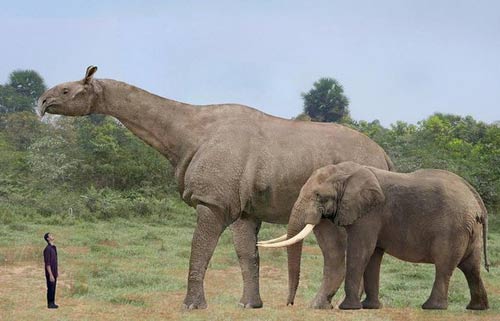Baluchitherium

Baluchitherium, latterly known as Indricotherium or Paraceratherium, known as is an extinct genus of rhinoceros known from fossils of the late Oligocene and early Miocene, from about 30 million to 16.6 million years ago. It is known from fossils found in Asia.
Baluchitherium was one of the largest land mammals that has ever lived. It stood about 5.5 meters (18 feet) high at the shoulder, was 8 meters (26 feet) long, and weighed an estimated 30 tons, which is more than four times the weight of the modern elephant.
The most distinctive feature of Baluchitherium was its enormous size and the long, curved horns on its snout. It is thought that these horns were used for display or possibly even defense against predators. The animal's body was heavily built, with thick legs and a sturdy frame, which would have been well-suited for carrying its massive weight.
Fossils of Baluchitherium have been found in several locations in Asia, including present-day Pakistan, India, and Afghanistan. The first specimen was discovered in 1875 in the Baluchistan region of what is now Pakistan, giving the animal its name. However, it was not until the early 20th century that the full extent of its size and appearance was understood, as the initial specimen was incomplete and only partially preserved.
Despite its impressive size, it is thought that Baluchitherium was a relatively gentle herbivore, feeding on leaves, twigs, and other vegetation. It would have used its large size and strength to knock down trees and branches in order to access food, and may have traveled in herds for protection from predators.
Unfortunately, Baluchitherium, like many other large herbivores, became extinct relatively recently in geologic terms. It is not clear exactly why this occurred, but it is possible that the animal's large size made it more vulnerable to changes in climate or the availability of food. It is also possible that the rise of more efficient predators, such as early humans, played a role in the extinction of Baluchitherium and other megafauna.


